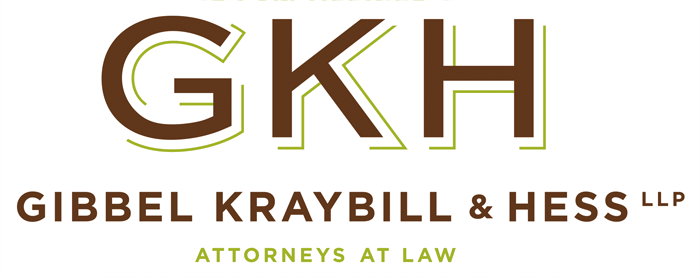Inflation Adjustments for Tax Benefits in 2018
The Internal Revenue Service just released the annual inflation adjustments for 2018 for changes in tax rate schedules, various tax-related benefits, and limitations on benefits and contributions for qualified retirement plans. Several of the changes that affect a broad spectrum of taxpayers include the following:
- The standard deduction for married filing jointly rises to $13,000 for tax year 2018, up $300 from the prior year. For single taxpayers and married individuals filing separately, the standard deduction rises to $6,500 in 2018, up from $6,350 in 2017, and for heads of households, the standard deduction will be $9,550 for tax year 2018, up from $9,350 for tax year 2017. The additional standard deduction for the aged or blind has increased $50 to $1300 for taxpayers who are married and file jointly, and to $1600 for single taxpayers.
- The personal exemption for tax year 2018 rises to $4,150, an increase of $100. The exemption is subject to a phase-out that begins with adjusted gross incomes of $266,700 ($320,000 for married couples filing jointly). It phases out completely at $389,200 ($442,500 for married couples filing jointly.)
- For tax year 2018, the 28 percent tax rate affects single taxpayers whose incomes exceed $93,700 and married taxpayers who file jointly whose incomes exceed $156,150. These are up from 2017 levels of $91,900 and $153,100, respectively. The top tax bracket of 39.6 percent affects single taxpayers whose incomes exceed $426,700 and married taxpayers filing jointly whose incomes exceed $480,050. These are up from 2017 levels of $418,400 and $470,700, respectively.
- The limitation for itemized deductions to be claimed on 2018 tax returns begins at income levels of $266,700 for single taxpayers and at $320,000 for married couples filing jointly.
- The Alternative Minimum Tax exemption amount for tax year 2018 is $55,400 and begins to be phased out at $123,100 for single taxpayers. For joint returns, the exemption amount is $86,200 and the phase-out begins at $164,100. The AMT rate of 28 percent applies to taxpayers with taxable incomes above $191,500 ($95,750 for married individuals filing separately).
- The tax year 2018 maximum Earned Income Credit amount is $6,444 for taxpayers filing jointly who have three or more qualifying children, up from a total of $6,318 for tax year 2017. The credit begins to be phased out at an earned income of $24,400 for one, two, or three qualifying children, and is completely phased out at $54,998 for three qualifying children.
- The amount of the penalty for not maintaining minimum essential health coverage in 2018 remains unchanged from 2017 at $695.
- For tax year 2018, the adjusted gross income amount used by joint filers to determine the reduction in the Lifetime Learning Credit is $114,000, up from $112,000 for tax year 2017. For single taxpayers, the amount is $57,000, up from $56,000 for tax year 2017.
- For 2018, the phase-out for the $2,500 deduction for interest paid on qualified education loans begins at a modified adjusted gross income of $65,000 for single taxpayers and $135,000 for married taxpayers filing jointly. The deduction is completely phased out at a modified adjusted gross income of $80,000 for single taxpayers and $165,000 for joint returns.
- For 2018, the aggregate cost of certain property that a taxpayer can elect to expense under Section 179 is now $520,000, an increase of $20,000 over 2017 levels. Reduction of this limitation begins once the amount of Section 179 property placed into service in 2018 exceeds $2,070,000, an increase of $60,000.
- The basic exclusion from federal estate tax for decedents who die in 2018 has increased to $5,600,000, up from an exclusion of $5,490,000 for estates of decedents who died in 2017. With regard to gifts, the annual exclusion amount has increased to $15,000 per donee, an increase of $1,000 from the exclusion amount for tax year 2017.
- For an estate of a decedent dying in 2018, if an executor elects the special use valuation method for qualified real property, the aggregate decrease in the value of the property as a result of the election cannot exceed $1,140,000, up from $1,120,000 in 2017.
- For 2018, the limitation on the annual benefit under a defined benefit plan is increased from $215,000 to $220,000. The limitation for defined contribution plans is increased from $54,000 to $55,000.
- Annual contribution limits for 401(k), 403(b) and 457 plans are increased from $18,000 to $18,500. The catch-up amount for these plans remains unchanged at $6,000.
- The annual contribution limit for IRAs remains unchanged in 2018 at $5,500, as does the catch-up amount of $1,000 for individuals age 50 or older. Likewise, the 2018 contribution limit and catch-up amount for SIMPLE retirement plans remains unchanged at $12,500 and $3,000, respectively.
- For 2018, the Roth IRA phase-out range for single taxpayers is $120,000 to $135,000. For taxpayers who are married and file a joint return, the phase-out range is $189,000 to $199,000.
Check back to the GKH web site during tax season to download our Tax Planning & Tax Controversy brochure that summarizes many of these and other important tax items.
